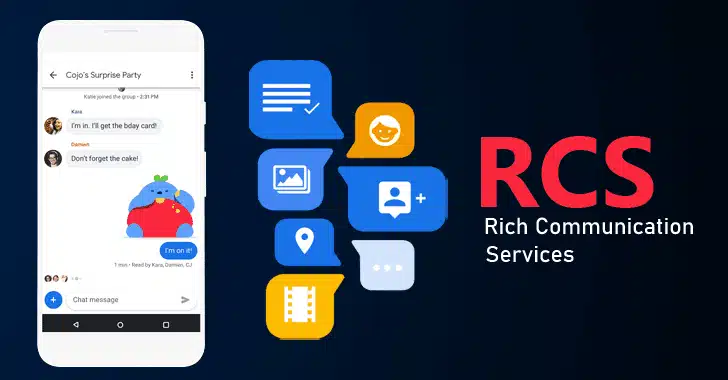Table of Contents
- 1 Understanding SMS Marketing
- 2 Some Helpful Tips
- 2.1 Use a Platform that Provides Fast SMS Sending
- 2.2 Start with a Short Code or TFN from the Beginning
- 2.3 Integrate With Other Channels:
- 2.4 Segment Your Audience
- 2.5 Be Compliant
- 2.6 Be Mindful of Branding
- 2.7 Offer Two-Way Communication
- 2.8 Track and Analyze Performance
- 2.9 Use Clear Call-to-Actions (CTAs)
- 2.10 Respect Frequency
- 3 Future Trends and Innovations in SMS Marketing
- 4 Final Thoughts!
In the fast-paced world of digital marketing, SMS marketing stands out as a powerful tool for engaging customers directly and instantly. With open rates often exceeding 90%, text messaging can be a game-changer for your business. However, you need to employ strategic tips and approaches to truly harness its potential.
Understanding SMS Marketing
SMS marketing utilizes text messaging to reach customers with promotional messages, updates, and alerts. Here’s an overview of its fundamentals:
Benefits:
- High Open Rates: Over 90% of SMS messages are read within minutes of receipt, ensuring message visibility.
- Instant Delivery: Messages are delivered instantly, allowing for quick communication of time-sensitive information.
- Direct Engagement: SMS offers a direct line of communication with customers, fostering personalized interactions and engagement.
- Cost-Effective: With low per-message costs, SMS marketing provides a cost-effective way to reach a wide audience.
Regulations:
- GDPR Compliance: Businesses must obtain explicit consent from recipients before sending marketing messages in compliance with GDPR regulations.
- TCPA Compliance: In the United States, the Telephone Consumer Protection Act (TCPA) regulates SMS marketing, requiring businesses to obtain prior express consent from recipients.
Best Practices:
- Permission-Based Marketing: Obtain explicit consent from recipients before sending SMS marketing messages to ensure compliance and respect recipients’ privacy.
- Personalization: Tailor messages to recipients’ preferences and behaviors to enhance relevance and engagement.
- Clear Call-to-Action (CTA): Include a clear and compelling CTA to encourage recipients to take action, such as making a purchase or visiting a website.
- Timing and Frequency: Determine the optimal timing and frequency for sending messages based on recipients’ preferences and behavior.
- Tracking and Analytics: Monitor the performance of SMS campaigns using metrics such as open rates, click-through rates, and conversion rates to optimize future campaigns.
Understanding these basics is essential for implementing effective SMS marketing campaigns that drive engagement and deliver results.
Some Helpful Tips
Here are some essential tips to help you master SMS marketing.
Use a Platform that Provides Fast SMS Sending
First and foremost, if you want SMS marketing tips, ensure you’re using a platform that can send SMS messages quickly and reliably. Speed is critical in SMS marketing, as it allows for the timely delivery of urgent information and promotional content. A fast SMS platform ensures your messages reach your audience when they’re most likely to engage.

Start with a Short Code or TFN from the Beginning
Investing in a short code or toll-free number (TFN) from the start can significantly enhance your SMS marketing efforts. Short codes are easier for customers to remember and recognize, lending credibility and trust to your messages. This initial investment pays off by making it simpler for customers to engage with your campaigns and increasing response rates.
Integrate With Other Channels:
Incorporating SMS marketing into a unified communications strategy can significantly enhance your overall marketing efforts. Think about how SMS can work alongside your other channels. For example, a website transaction can trigger text message shipping alerts, or a support request that begins via text can smoothly transition to a live agent call. This seamless integration across different platforms is where SMS marketing truly excels, offering a cohesive and comprehensive customer experience. Ensuring all channels work together provides your customers a more engaging and efficient journey.
Segment Your Audience
Tailoring your SMS messages to meet your audience’s needs and interests is essential. For example, if you’re a New York-based SEO company, you should focus your marketing messages on customers within the New York region. Segmenting your audience based on location, age, job position, or interests, such as the type of car they drive, can dramatically boost engagement and conversion rates. This level of personalization ensures that your messages are more relevant and appealing to each recipient, making them more likely to take the desired action.
Be Compliant
Adhering to legal requirements in your SMS marketing is not just a best practice but a necessity. Always obtain explicit permission from customers before sending them text messages, clearly communicate your terms and conditions, and ensure they can opt-out anytime. Compliance helps you avoid legal troubles and also builds trust with your audience. Respecting customers’ privacy and preferences is fundamental to maintaining a positive and long-lasting relationship with them.
Be Mindful of Branding
SMS marketing provides an excellent opportunity to reinforce your brand. Make sure to include your company name in your messages to keep your brand top of mind. Avoid being overly pushy or sales-heavy in your messaging; focus on delivering value and building a positive brand image. Consistent branding in your SMS messages helps create a recognizable and trustworthy presence that resonates with your audience, fostering loyalty and long-term engagement.
Offer Two-Way Communication
An effective SMS marketing strategy includes supporting two-way communication. Customers appreciate the ability to engage with brands rather than just receiving messages from them. Monitoring and responding to incoming texts opens a major opportunity to enhance customer relationships and engagement. Fostering a dialogue allows you to address customer queries, gather valuable feedback, and build a more interactive and responsive brand presence. This two-way interaction can significantly improve customer satisfaction and loyalty.
Track and Analyze Performance
Tracking and analyzing your campaigns’ performance is essential to continually improve your SMS marketing efforts. Use metrics such as open, click-through, and conversion rates to understand what works and what doesn’t. Regular analysis helps you refine your strategies, optimize message content, and achieve better results.
Use Clear Call-to-Actions (CTAs)
Every SMS message should have a clear and concise call-to-action (CTA). Whether it’s prompting customers to visit your website, purchase, or reply for more information, a strong CTA drives engagement and encourages the desired response. So, along with other SMS marketing tips, ensure your CTA is easy to understand. It is also directly related to the content of your message.
Respect Frequency
While SMS marketing is highly effective, it’s important not to overdo it. Too many messages can annoy your customers and lead to higher opt-out rates. Find a balance in your messaging frequency that keeps your audience engaged without overwhelming them. Tailor the frequency to your audience’s preferences and the nature of your messages.
Future Trends and Innovations in SMS Marketing
As technology continues to evolve, so does the landscape of SMS marketing. Here are insights into emerging trends and technologies shaping its future:
1. Rich Media Messaging: Incorporating multimedia elements such as images, videos, and GIFs into SMS messages to enhance engagement and provide more interactive experiences for recipients.
2. Chatbots and AI: Leveraging artificial intelligence and chatbot technology to automate customer interactions, answer queries, and provide personalized recommendations via SMS.
3. RCS (Rich Communication Services): RCS is an upgraded messaging protocol that allows for richer, more interactive messaging experiences, including features like group chat, file sharing, and location sharing.
4. Personalization at Scale: Utilizing data analytics and machine learning algorithms to deliver highly personalized SMS messages tailored to individual preferences, behaviors, and demographics.
5. Two-Way Conversational Messaging: Moving beyond one-way communication to facilitate two-way conversations between businesses and customers, allowing for real-time engagement and feedback.
6. SMS Integration with Other Channels: Integrating SMS marketing with other channels such as email, social media, and mobile apps to create cohesive omnichannel marketing campaigns and enhance customer experiences.
7. Enhanced Security and Authentication: Implementing advanced security measures and authentication protocols to protect against SMS phishing attacks and ensure the security of customer data.
8. Location-Based Messaging: Utilizing geolocation technology to deliver targeted SMS messages based on recipients’ physical locations, enabling hyper-localized marketing campaigns.
9. Voice-Based SMS Marketing: Integrating voice technology into SMS messages to provide an alternative communication channel for customers who prefer voice interactions over text.
10. Blockchain for SMS Verification: Exploring the use of blockchain technology to verify the authenticity of SMS messages and prevent spoofing or fraudulent activities.
By staying informed about these emerging trends and innovations, businesses can stay ahead of the curve and leverage the latest technologies to enhance the effectiveness and impact of their SMS marketing campaigns.
Final Thoughts!
By implementing these SMS marketing tips, you can enhance your communication strategy, build stronger customer relationships, and achieve better marketing outcomes. SMS marketing can be a powerful addition to your overall marketing efforts when done right.
Lastly, remember to stay compliant, personalize your messages, and integrate SMS with other channels for maximum impact. With the right approach, SMS marketing can drive significant engagement and conversions for your business.






